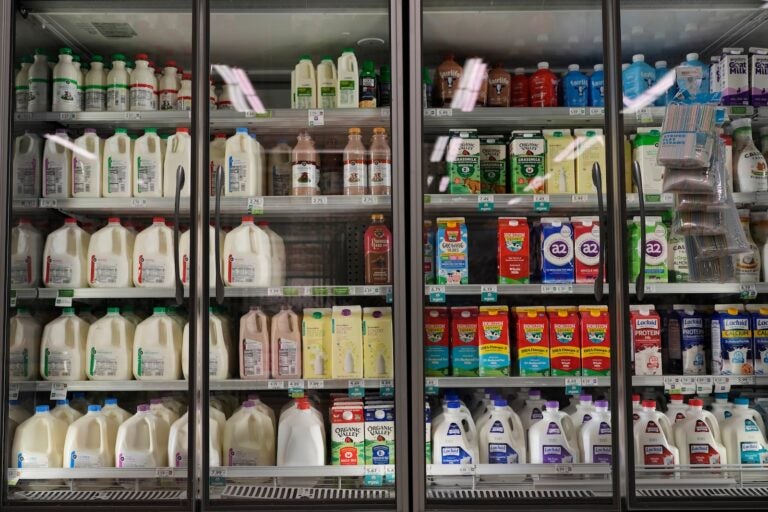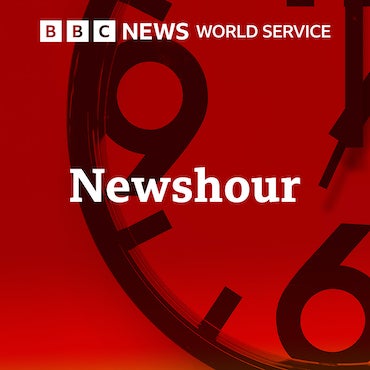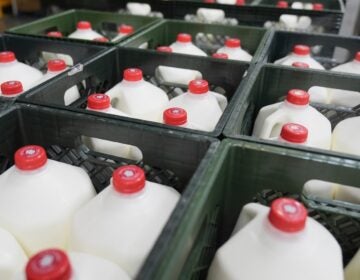SNAP partial benefits will be delayed by Trump admin’s red-tape process, Pa. officials say
Pennsylvania officials are asking the federal government to allow them to use a swifter method to calculate each household’s partial payment.

Dairy products, which are covered by the USDA Supplemental Nutrition Assistance Program (SNAP), is displayed for sale at a grocery store Friday, Oct. 31, 2025. (AP Photo/George Walker IV)
SNAP funding freeze: What to know
- 42 million people — about 1 in 8 Americans — rely on SNAP
- Locally, that includes nearly 2 million people in Pa., with roughly 685,000 in the Philadelphia region, and more than 800,000 in New Jersey
- Here’s how to find other free food resources in the Philly region and in South Jersey, and how to help
This story originally appeared on WESA.
Despite a court ordering the federal government to pay at least partial November food assistance benefits, Pennsylvanians likely won’t see that aid anytime soon — due to an extremely complex and cumbersome process federal officials are requiring — according to state human services officials.
The state has ways it can quickly deliver partial benefits, but the federal government is “directing states to use the most complex and labor-intensive approach possible,” according to a bluntly worded letter sent Tuesday by Pennsylvania Human Services Secretary Val Arkoosh to the U.S. Department of Agriculture, which administers the food stamp program.
A copy of the letter was obtained by WESA.
“This will only further delay availability of food assistance for nearly 2 million Pennsylvanians who are currently not receiving benefits to which they are entitled, and result in wasted taxpayer dollars and long-term harm to Pennsylvania’s SNAP program.”
State officials are asking the federal government to allow them to use a swifter method to calculate each household’s partial payment — essentially giving everyone 50% of their normal SNAP allotment. This quicker approach was previously permitted during President Trump’s first term to issue pandemic-related benefits, according to Arkoosh.
“This is an existing, understood practice that states can employ as necessary,” she wrote.
Trump administration officials said last month they would not pay November SNAP food assistance benefits during the ongoing government shutdown, despite contingency funds being available that could cover at least a portion of the roughly $8 billion cost. On Friday afternoon however, two separate federal judges ruled the administration had to use available funds to cover either full or partial benefits.
But the procedure laid out by federal agriculture officials on Tuesday for how states should calculate partial benefits is extremely cumbersome, according to Arkoosh’s letter.
Using the process federal officials are mandating would require “completely restructuring Pennsylvania’s core eligibility and case management system,” which Arkoosh estimates would require “10,000 hours of work and depending upon the size of the team available, a minimum of 9-12 business days.” However, those projections could grow as the vendors Pennsylvania would need to complete the process would likely be needed by every other state as well, her letter says. It would likely take an additional 10 days after that to issue benefits following the system overhaul. The same amount of work would be required after the government shutdown ends to return the state’s systems to normal to distribute full monthly benefits.
Such a complex process also risks errors at a time when the state can ill afford them. President Trump’s budget bill, passed earlier this year, penalizes – up to hundreds of millions of dollars – states whose SNAP error rates are too high.
Arkoosh’s letter asks federal officials to not penalize states for errors during the process, and to allow states to make a one-time issuance in the amount of 50% of the current monthly SNAP benefit for which households are eligible, which would be a much swifter process and “not require any foundational systems changes.”
A host of food banks and other nonprofits, as well as local and state officials have been mobilizing for weeks to attempt to at least meet part of the need that would be felt should November SNAP benefits not be paid, though many advocates have said charities cannot make up for the lost government assistance.
Governor Josh Shapiro signed a disaster declaration last week that will empower him to send $5 million to food banks statewide. That amount, however, represents only a fraction of the roughly $366 million in SNAP aid that goes to Pennsylvanians monthly.
Speaking on Tuesday, Shapiro said it would take “well over a month to drive those [SNAP] dollars out, because their bureaucratic hurdles that they set up. So, it’s not really a viable option for people who are hungry right now.”
The best way to help feed people is “by getting the federal government to reopen and getting Donald Trump and the Republicans to do their job,” he said.
A large message on the USDA website blames Senate Democrats for the shutdown. Democrats have said they are withholding their votes to reopen the government until Republicans act to restore Affordable Care Act tax credits which are set to expire, increasing healthcare costs for millions.
Close to two million Pennsylvanians receive SNAP, including more than 160,000 people in Allegheny County.
Several local human service leaders, speaking Monday afternoon in a briefing for area nonprofits and reporters, said the news that at least a portion of the benefits would be paid was good, but not enough.
“Think about if all of a sudden you had half to spend at the grocery store,” said Bobbi Watt Geer, president and CEO of United Way of Southwestern Pennsylvania. “So I think while that is encouraging news, it still means that we need to stand up a response in our community.”
More information about food assistance: Greater Pittsburgh Community Food Bank
For information about other assistance available: https://www.pa211.org/
WHYY is your source for fact-based, in-depth journalism and information. As a nonprofit organization, we rely on financial support from readers like you. Please give today.






